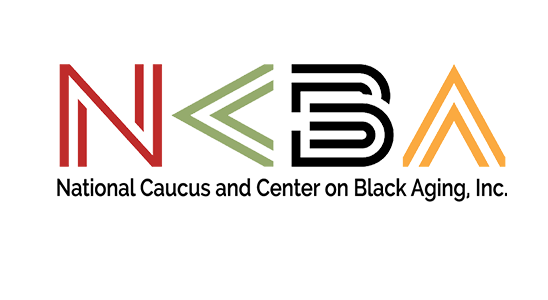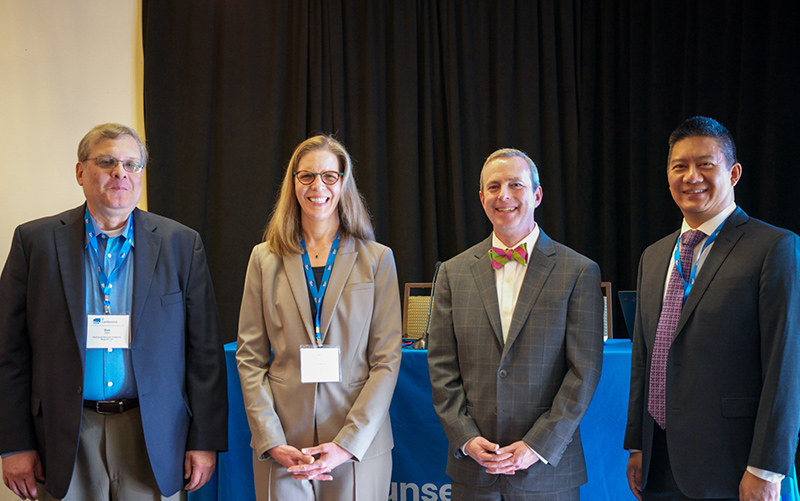“You know,” Karyne Jones laughs, “I am about the same age as many of the people I work with, so the older I get, the closer this work hits home!”

Jones, the President and Chief Executive Officer at the National Caucus and Center on Black Aging (NCBA), has been working to help aging Black communities for 25 years. But as she has learned throughout her work, helping Black communities, ultimately, helps all communities.
“I never saw myself as working in aging specifically,” Jones said. “But I realize now that, as I began working with NCBA, I drew upon different areas that had always interested me, such as civil rights, helping folks who are much more vulnerable than others, and all those kinds of things.”
Representing underserved communities for 53 years
As the NCBA explained in their 2021 informational publication “Black and Aging in America,” “Driven by the Baby Boom of 1946 and 1964, the number of Older Americans has grown substantially since the 2010 U.S. Census. In one decade, the country’s 65-and-older population swelled from 40.3 million to 54 million, an increase of more than 34 percent. Census officials found that no other age group grew as much in those ten years.”

And this growth is only expected to increase, pushing a greater need for attention and legislative reform when it comes to how we support elderly populations—especially elderly populations that have higher instances of chronic disease and lower access to medical resources and other social safety nets. This need echoes similar legislative goals that were undertaken at the point of the NCBA’s inception.
“NCBA was founded 53 years ago by a group of African American nursing home professionals around the time that the Older Americans Act was being passed,” explains Jones. “They felt they needed to create a coalition of different folks in the profession in order to make sure that communities of color weren’t left out. They formed NCBA to really try to give minority voices a seat at the table, and they succeeded. Now, the organization works with a variety of underserved communities, for example, in poorer neighborhoods and rural areas.”
 Today, as “Black and Aging in America” goes on to explain, “Across the spectrum of American life, African Americans and other People of Color suffer inequities in nearly all quality-of-life indexes, cradle-to-grave: health, net wealth, employment, education, housing, and longevity. These disparities are not only no different for the older Black population, but more pronounced.” These have been legacy issues in Black America, yet the work of organizations like NCBA have made a distinct impact on the quality of life for aging POC populations and they are planning to continue expanding.
Today, as “Black and Aging in America” goes on to explain, “Across the spectrum of American life, African Americans and other People of Color suffer inequities in nearly all quality-of-life indexes, cradle-to-grave: health, net wealth, employment, education, housing, and longevity. These disparities are not only no different for the older Black population, but more pronounced.” These have been legacy issues in Black America, yet the work of organizations like NCBA have made a distinct impact on the quality of life for aging POC populations and they are planning to continue expanding.
“We have certainly evolved from 53 years ago,” says Jones. “For example, we have grown to develop a new Caribbean group. We work more with Africans who have recently come into this country. We work with South American people of color, and then we work with, and on behalf of, poor people—regardless of color. Because if we can win something to help any person of color, we’ve helped everybody, particularly poor people, and that’s really been our focus.”
And the work they are doing today is engaged, exciting, and innovative. “I love telling the story of the organization and really helping people understand how important it is for them to care about issues like Social Security, Medicare, where we’re going with prescription drugs, as well as things like affordable housing. This is work that affects everybody eventually.”
Health care encompasses more than medical needs
The NCBA has long understood the role of stress in health and, as a result, has taken a holistic approach to health care by working to improve and expand things like affordable housing and skills training, as well as improved health care access and outreach.

Jones continues, “Some have even only had jobs where they were paid under the table. So they have no social security quarters. Those are the kinds of things we’re dealing with. When we talk about public health, that includes not only being able to go get quality health care, but it also includes things like having a safe place to live or having a job where they feel fulfilled—things that reduce stress. And we combine that with help for them to maintain their health care, be able to buy healthy foods, as well as buy medicine and all of that work comes together.”
 And the problems they are solving are keeping up with the times. As Jones describes: “We are closing on a property in Washington D.C. where we will build 175 new apartment units that are going to be a little different, because it’s not just senior housing. We’re setting aside 40 of those apartments for grandfamilies. These are for grandparents who have to assume the responsibility of their younger relatives. Before, if they were living in senior housing, their grandchildren couldn’t live with them in those facilities. This new project is working to solve that issue with senior housing.”
And the problems they are solving are keeping up with the times. As Jones describes: “We are closing on a property in Washington D.C. where we will build 175 new apartment units that are going to be a little different, because it’s not just senior housing. We’re setting aside 40 of those apartments for grandfamilies. These are for grandparents who have to assume the responsibility of their younger relatives. Before, if they were living in senior housing, their grandchildren couldn’t live with them in those facilities. This new project is working to solve that issue with senior housing.”
Pivoting and slow improvements during the pandemic
“Despite some of the fantastic gains we had made prior, COVID really set us back,” laments Jones. “COVID was hitting our people hard because there is a higher instance of obesity and chronic diseases, but another risk factor was stress, which profoundly affects the immune system.”
As “Black and Aging in America” points out, “The Covid-19 pandemic of 2020-21 unearthed long-buried truths about disparities in health and health care between White Americans and African Americans.” The publication details, “While older Black adults composed only 9 percent of the 65-and-older population, they accounted for 37 percent of Covid-19 hospitalizations in 2020 and 2021.”
The legacy systems that blocked safety and access for aging Black populations were rearing their heads again, and the NCBA found itself working double to not only make the needs of its people heard, but also re-solving issues of access for the new pandemic reality.

“We saw more people of color dying early in the COVID pandemic than any other group,” recalls Jones. “Yet, once vaccination sites started to be set up, they were set up in areas that were not accessible to poor people. So we screamed and hollered and got messages to the White House and the CDC and HHS, and everybody else saying, ‘This isn’t fair. This isn’t accessible.’ So the sites were then expanded, but they relied on a system where you had to go online and make an appointment.”
She continues, “But many of our folks aren’t tech savvy in that way. They didn’t know how to navigate the system. So then we got a lot of different volunteers in different parts of the country where we could help seniors schedule and navigate the appointments. Another problem was transportation. If a site wasn’t nearby, many of our people had no way to get to it. We were able to address that issue more once the administration changed. So things did improve, little by little.”
Yet, the NCBA understands that the work is far from over. Rather, the new normal comes with new challenges, and a reinvigorated need for hypervigilance.
“We really were able to help mobilize a lot of, particularly African American, organizations during the pandemic,” says Jones. “And, as a result, we started seeing a decrease in the death rate and an increase in health care access. We, of course, had the problem of vaccine hesitancy. So we came up with a video that addressed hesitancy, as well as all of the rumors that were out there. Now our efforts are focused on dealing with remaining hesitancy, as well as trying to get people to go back to get their boosters.”
[embedyt] https://www.youtube.com/watch?v=6hAIGiH_eqM[/embedyt]
Looking forward, Jones says, “I’m sure there’ll be another pandemic in the future. So now we are asking, what have we established with regard to preparedness so that we’re not running around still trying to figure out where a site needs to be, and are vaccinations and treatment accessible to people?”
Jones is still energized by the work that NCBA is doing. “I am really kind of on the down slope of my career,” she says. “I’ll be 70 years old next year. All of my friends are already retired. But I’m not ready to retire yet. I have a few more projects I want to get completed.”




